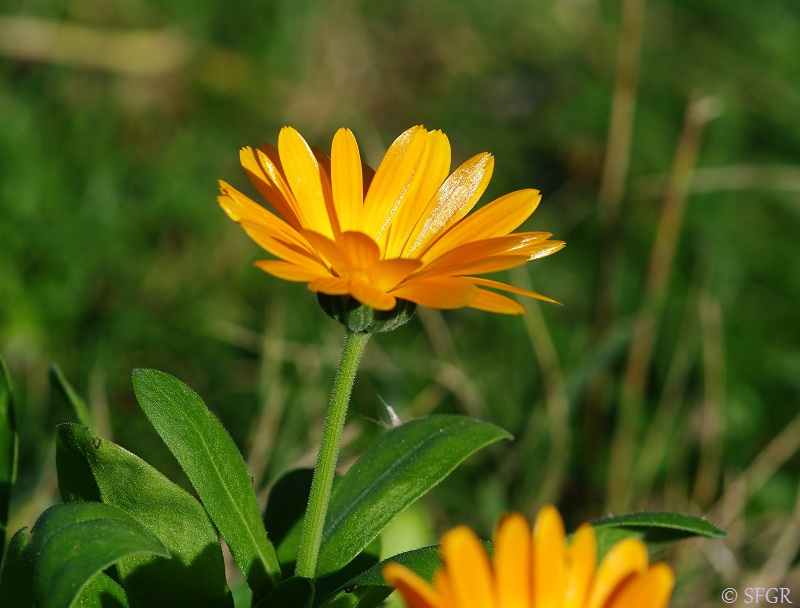Calendula persica: Red Data Book of Armenia

EN B 1 ab(i,ii,iii) + 2 ab(i,ii,iii)
Category. Endangered species. It occurs in two floristic regions. The extent of occurrence and the area of occupancy are less than 500 km2. The species grows in the area of intensive land development. It was included in the first edition of the Red Data Book of Armenia as Calendula arvensis under Category 2: Rare species. It is not included in the Annexes of CITES and that of the Bern Convention.
Description. Annual plants. Stems 5–25 cm, ascending or prostrate, branched from the base, minute glandulose. Leaves oblong–obovate to oblong–lanceolate. Marginal ligulate flowers narrow, golden–yellow. Capitula 7–8 mm wide, during fructification globular. All achenes ring– shaped, densely glandular; external ones distinctly larger than inner ones, on dorsal side hispid–aculeate, on ventral side and at margins winged; inner ones not winged, tuberculate.
Distribution. In Armenia it occurs in Zangezur (Nerkin Hand) and Meghri (Shvanidzor, Nyuvadi) floristic regions. EOO is 230 km2, AOO is 24 km2. The number of locations is 4. Grows in South and East Transcaucasia, South–West Asia.
Ecological, biological and phytocoenological peculiarities. Grows in lower mountain belt, at the altitudes of 500–700 meters above sea level, on dry stony and clay slopes, among semi–desert vegetation, sometimes as weed in the fields. Flowering in April, fruiting in May.
Limiting factors. Restricted extent of occurrence and area of occupancy, loss/degradation of habitats caused by land development.
Conservation actions. Part of the population grows in "Shikahogh" State Reserve. Necessary: monitoring of the population state.
Suggestions
 The Ministry of Environment sent a letter international partners to draw their attention to the real danger of environmental disasters as a result of Azerbaijan's large-scale aggression towards the territory of Armenia
The Ministry of Environment sent a letter international partners to draw their attention to the real danger of environmental disasters as a result of Azerbaijan's large-scale aggression towards the territory of Armenia
 Vicia pisiformis: Red Data Book of Armenia
Vicia pisiformis: Red Data Book of Armenia
 Vavilovia formosa: Red Data Book of Armenia
Vavilovia formosa: Red Data Book of Armenia
 Trigonella capitata: Red Data Book of Armenia
Trigonella capitata: Red Data Book of Armenia
 Trigonella astroides: Red Data Book of Armenia
Trigonella astroides: Red Data Book of Armenia












